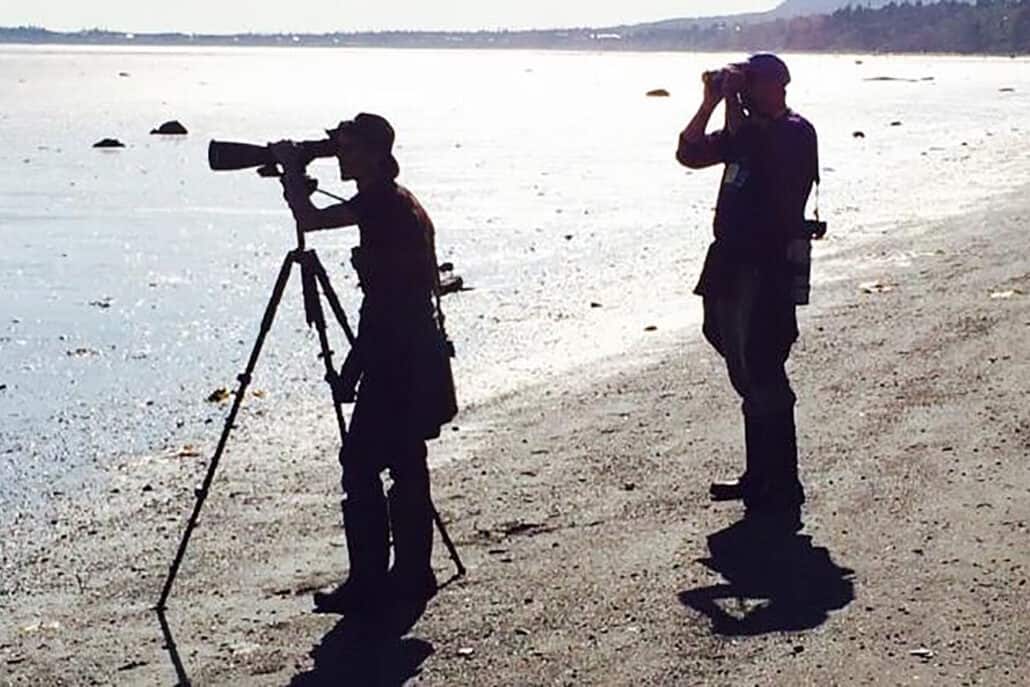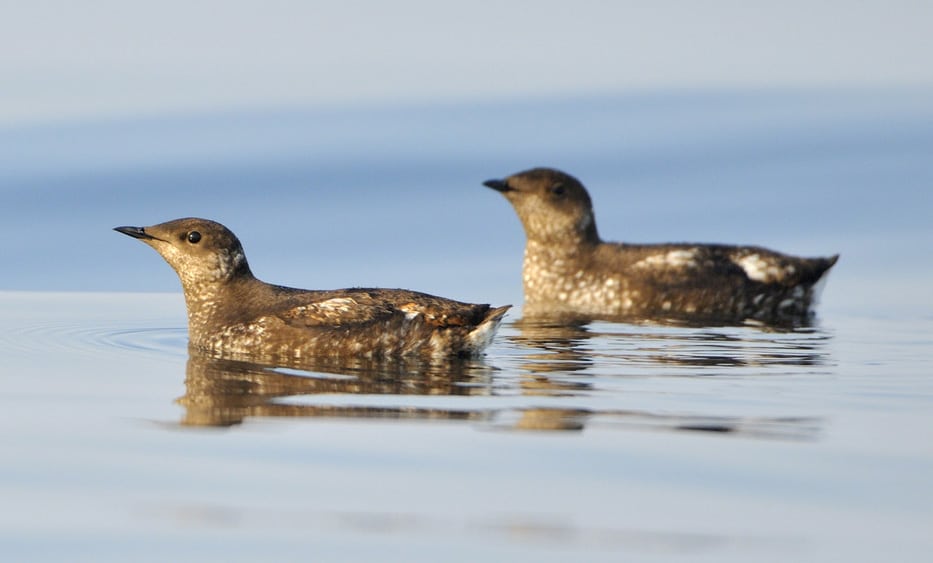Winter Birds of Wisconsin (December, January, Feburary)
“Cold enough for you?” During most winters in Wisconsin, that simple query says it all. Subzero temperatures are common, with northwest winds sometimes adding sting. But no matter how low the mercury dips, or how deep the snow cover, you’ll find winter birds of Wisconsin going about their business.
Small flocks of black-capped chickadees search for food, foraging for seed and suet. They often join nuthatches, cardinals, downy woodpeckers, and others at backyard feeders. At night, the chickadees may roost closely together in the branches of a conifer, effectively sharing and conserving body heat in the confines of the tree’s branches.
Flocks of Wisconsin bird watchers also congregate in winter, to foray rather than forage, sometimes in ridiculously cold temperatures. They are often rewarded.
Thirty miles northwest of Madison, crowds gather at the Prairie du Sac Dam to watch the numerous bald eagles perched near open water of the Wisconsin River, while others take in the sight from the warmth of their cars. The dam creates a roiling current that prevents the river from freezing, providing a freshwater buffet and easy eating for the hungry eagles. As many as two dozen or more eagles overwinter in this area, known for its rugged hills and bluffs. Less well-known is that the area played an important role in today’s California wine industry. In 1840, a Hungarian count named Agoston Haraszthy arrived in this scenic part of the state, where he planted a grape rootstock on the hillside and founded Sauk City. Finding the bitter winters damaging to his vines, he followed the Gold Rush and headed west in 1849, where he became known as the father of the California wine industry.
For those interested in seeing eagles, the state offers several other good viewing winter sites. In far southwestern Wisconsin, eagles are often seen near Cassville on the Mississippi River. In northern Wisconsin, bird watchers often spot eagles on the ice off the shore of Lake Superior near Wisconsin Point.
Along Wisconsin’s other Great Lake, large rafts of greater scaup are frequently seen offshore, sometimes numbering in the thousands. Often Lake Michigan winter waterfowl sightings include common goldeneyes, bufflehead, and common mergansers.
Reports of snowy owls usually start coming in by mid- to late November, often from cities such as Green Bay located on large bodies of water. The first reports of snowies generally emanate from northern counties, although there are a few records of birds arriving in the Superior area by mid-October.
In some years, great gray owls also visit the northern third of the state. When they do, birding hotlines buzz with news that these Arctic denizens have been sighted. The great gray is the largest North American owl and one that often hunts by day. Although its plumage is similar to that of the barred owl, which is common in the state, the great gray is much larger with distinctive yellow eyes.
During winter, the state’s many great horned owls focus on family life. Courtship begins in late December as the owls call one another, establishing pair bonds. Pairs soon set up housekeeping, often nesting in abandoned red-tailed hawk nests. The female lays one to three eggs in late January or February, which she incubates for about a month. A stay-at-home mom, her mate brings in dinner while she keeps the eggs and, later, the young hatchlings warm.
The annual Christmas Bird Count, simply known to many bird watchers as the CBC, takes place between December 15 and January 5. More than 50,000 observers participate nationally in this all-day census of early-winter bird populations, which is sponsored by the National Audubon Society. The results of their efforts are compiled into the longest running database in ornithology, representing more than a century of unbroken data on trends of early-winter bird populations across the Americas. In 2003, Wisconsin CBC participants tallied 147 species, including numerous species rarely seen in the state (e.g., lesser black-backed gull) or rarely seen here during winter (e.g., brown thrasher, vesper sparrow).
The CBC counts in northern Wisconsin frequently include evening grosbeaks, showy yellow birds with thick bills and black and white wings. Flocks of noisy grosbeaks often take over feeders, where they jockey for position in quest of sunflower seeds. Sometimes described as quarrelsome, they clear the room before cleaning out the feeder. Birds with hardy appetites, they use their huge bills to crack open seeds and extract the kernels. In Birds at Your Feeders by Erica Dunn and Diane Tessaglia-Hymes, the authors report about one hundred sunflower seeds are needed to meet the average daily energy requirements of a grosbeak.
In southern Wisconsin, pine siskins and common redpolls sometimes join goldfinches at niger (thistle) feeders in a more harmonious feast. Although the three species are similar in appearance in their winter plumage, there are several distinctive field marks to help you sort them out. Redpolls sport a red cap and black chin, with streaked flanks along the white underparts, while siskins have heavily streaked underparts and often show a patch of yellow in the wing. During irruption years, large numbers of siskins and redpolls show up on CBC counts.
Later in winter, many of the state’s “citizen scientists” report their observations to the Great Backyard Bird Count, a joint project of National Audubon Society and Cornell Laboratory of Ornithology. Over a four-day period, participants track the highest number of individuals observed at any one time during recommended viewing times of thirty minutes.
Northern cardinals are among the species commonly observed. By late February, male cardinals begin singing in earnest in response to lengthening daylight. Light receptors in the brain’s hypothalamus are stimulated by the longer days of January and February, and in response release hormones that set off a series of physical reactions, including increased singing.
The late winter sun motivates mourning cloak butterflies to join the action, after spending months under a flap of loose bark or other shelter. The purplish-brown butterflies, wings edged in yellow, soak up the sun’s heat with their large dark wings and then transfer this warmth to flight muscles in their thorax.
With cardinals in song and butterflies a-wing, the message is clear: spring is on its way.




